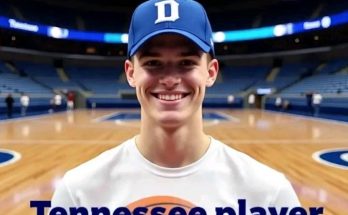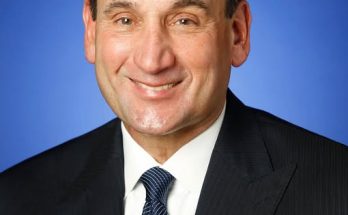Hugh Freeze, the head coach of Auburn University’s football program, recently spoke candidly about the massive \$2.8 billion settlement involving the NCAA, universities, and players concerning the use of athletes’ names, images, and likenesses (NIL). This landmark agreement has sent ripples across college sports, and Freeze is among those carefully considering what it means for Auburn’s future, especially regarding recruiting. The settlement promises to reshape college football’s landscape, potentially leveling the playing field in some ways but also creating new challenges and opportunities for programs like Auburn.
The \$2.8 billion settlement stems from long-standing debates and legal battles over whether college athletes should be compensated for the commercial use of their NIL. For decades, athletes generated enormous revenue for their schools, conferences, and the NCAA without receiving direct financial compensation beyond scholarships and stipends. With NIL now entering a new legal framework, the settlement ensures that athletes can benefit from endorsements, sponsorships, and other income tied to their personal brands. This development is a game-changer, fundamentally altering the recruiting landscape across the country.
Hugh Freeze, who has been navigating college football’s competitive recruiting climate for years, expressed cautious optimism about how this settlement could influence Auburn’s ability to attract top talent. He acknowledged that the NIL era introduces both opportunities and complications. On one hand, players at Auburn can now pursue financial opportunities tied directly to their personal brands, which is an enticing proposition for recruits who increasingly view college not just as an athletic stepping stone but as a platform for long-term career and financial development. On the other hand, the sheer scale of NIL deals nationwide means Auburn will face intensified competition from programs with larger markets, more established brands, and deeper booster networks.
One of the core points Freeze emphasized is the importance of Auburn maintaining a holistic recruiting approach. While NIL earnings have become a significant factor in athletes’ decisions, Freeze noted that the university’s academic offerings, coaching staff, team culture, and facilities still play a vital role. He is committed to leveraging Auburn’s unique strengths while helping players navigate NIL opportunities responsibly and effectively. Freeze believes that Auburn can position itself not just as a place for athletes to earn lucrative NIL deals but as an environment that develops champions on and off the field.
The settlement’s size—\$2.8 billion—is unprecedented in college sports and signals a significant redistribution of wealth and resources. Freeze recognized that while this influx of money could theoretically widen the gap between powerhouse programs and smaller schools, it might also democratize opportunities for athletes. In particular, the settlement aims to create more standardized NIL guidelines and protections to ensure fairness and transparency. This is critical for programs like Auburn, which are competing against juggernauts in terms of recruiting budgets and market appeal.
Recruiting, as Freeze sees it, is evolving beyond traditional scouting and evaluations. Today’s athletes and their families are savvy consumers of the NIL marketplace. They demand guidance on contracts, brand management, and long-term financial planning. Freeze highlighted that Auburn is investing in support structures to educate athletes about these matters. This includes partnerships with financial advisors, legal experts, and marketing professionals who can help players maximize their NIL potential while avoiding pitfalls. By fostering a comprehensive support network, Auburn aims to build trust and loyalty with recruits and their families, making the program attractive beyond just football.
In the context of recruiting battles, Freeze also discussed how NIL could shift power dynamics. Historically, programs in large media markets or with celebrity alumni had an edge in offering lucrative endorsement opportunities. However, the settlement’s intent to regulate NIL activities and the rise of social media influencers and micro-brands could level the playing field somewhat. Freeze believes Auburn can capitalize on regional brand loyalty and emerging digital marketing trends to create compelling NIL prospects for players. This means recruiting not only the best athletes but also those who understand and can harness the power of their personal brand in a digitally connected world.
Furthermore, Freeze acknowledged that NIL deals vary widely depending on an athlete’s sport, position, and personal charisma. For football, particularly in a competitive conference like the SEC, the stakes are high. The \$2.8 billion settlement adds financial muscle to the NIL infrastructure, enabling more sophisticated contracts and endorsements, but also increasing scrutiny. Freeze stressed that Auburn must maintain strict compliance with NCAA regulations and state laws to avoid jeopardizing players’ eligibility or the program’s reputation. This compliance focus will be a key component of recruiting pitches, ensuring families that Auburn is a safe and supportive environment.
Another angle Freeze explored is the long-term impact of the settlement on team chemistry and player motivation. The potential for large NIL deals could create disparities within a roster, possibly leading to divisions among teammates. Freeze is aware of this challenge and is proactive about fostering a team-first mentality. He emphasized leadership development and open communication to keep the locker room united despite varying financial circumstances. This approach aims to ensure that while NIL can be a significant factor, it does not undermine Auburn’s core values of teamwork, discipline, and shared purpose.
The settlement also has implications for Auburn’s relationships with boosters and alumni. Freeze sees an opportunity for the program to engage its extensive network more strategically to support NIL initiatives. By connecting boosters directly with players in compliant ways, Auburn can help athletes secure endorsements that benefit both parties. This synergy could strengthen Auburn’s recruiting appeal, providing tangible NIL opportunities through trusted community connections rather than impersonal corporate sponsorships alone.
From a broader perspective, Freeze recognizes that Auburn is entering a new era in college athletics, where financial literacy and brand management are as crucial as on-field skills. The \$2.8 billion settlement is a catalyst for this transformation. Freeze is optimistic but realistic, noting that the settlement won’t solve all challenges overnight. Instead, it represents a foundation upon which Auburn must build a modern recruiting strategy that integrates NIL education, compliance, player development, and competitive football.
As recruiting cycles progress under these new conditions, Freeze expects Auburn will need to be more agile and innovative than ever. He envisions collaborations with local businesses, digital marketing firms, and NIL platforms to expand the university’s reach. Additionally, recruiting staff must be equipped to have sophisticated conversations about NIL potential, helping recruits understand how Auburn’s program can support their financial and athletic ambitions holistically.
The \$2.8 billion settlement is also a reminder that college football programs operate within an increasingly complex ecosystem of legal, commercial, and ethical considerations. Freeze sees Auburn’s leadership as committed to navigating this landscape responsibly. He highlighted the importance of transparency with players and families, setting clear expectations, and fostering a culture of integrity. These principles, according to Freeze, will help Auburn stand out in a crowded recruiting marketplace increasingly influenced by money and marketing.
Ultimately, Freeze’s perspective underscores a pragmatic embrace of change. He acknowledges that NIL and the settlement represent a paradigm shift but also stresses that the fundamentals of recruiting—relationship building, player development, and competitive success—remain essential. Freeze’s approach combines leveraging new financial opportunities with preserving Auburn’s tradition and culture, aiming to create a well-rounded program attractive to recruits who want to excel both on and off the field.
In conclusion, Hugh Freeze’s commentary on the \$2.8 billion House settlement reflects a thoughtful, nuanced understanding of how college football is evolving. He sees Auburn positioned to benefit from the settlement by adopting a comprehensive strategy that integrates NIL education, compliance, and innovative recruiting. While acknowledging the challenges of competing against larger programs and navigating new legal frameworks, Freeze is confident that Auburn’s commitment to excellence, player support, and community engagement will sustain and grow the program’s competitive edge. The settlement is not just a financial event but a transformational moment for recruiting philosophy, and Auburn under Freeze’s leadership aims to be at the forefront of this new era in college athletics.


